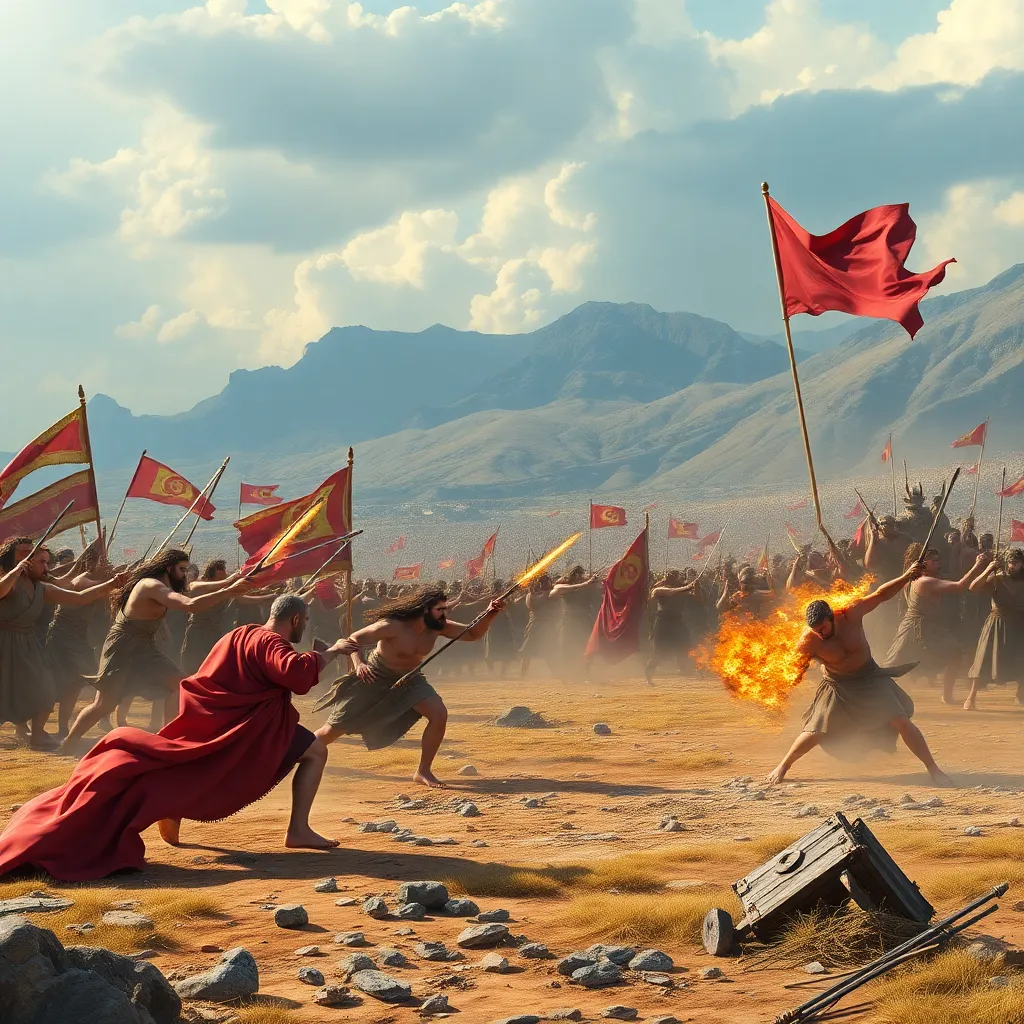The Iliad’s Representation of the Battlefield: Chaos and Order
I. Introduction
The Iliad, attributed to the ancient Greek poet Homer, stands as one of the cornerstones of Western literature. Written in the 8th century BCE, this epic poem chronicles the events of the Trojan War, focusing on the hero Achilles and the moral dilemmas faced by the characters involved in the conflict. Beyond its narrative, The Iliad delves deeply into the themes of chaos and order, particularly in the context of the battlefield. This article aims to explore these themes, investigating how they manifest in the experiences of characters and the larger implications for human conflict.
II. The Concept of the Battlefield in Ancient Greek Culture
Warfare in ancient Greece was not only a crucial aspect of life but also a central theme in their literature and mythology. The battlefield was seen as a place where honor and glory could be attained, and where one’s worth could be measured against others.
- Historical context of warfare: The ancient Greeks engaged in frequent battles, both for territorial expansion and for personal honor.
- Role of honor and glory: Soldiers fought not only for their city-states but also to achieve personal glory and to gain respect from their peers.
- Moral conflict: The battlefield represented a space where physical and moral struggles intertwined, challenging warriors to confront their values and beliefs.
III. Depictions of Chaos on the Battlefield
The Iliad vividly depicts the chaos inherent in battle, capturing the confusion and terror experienced by warriors. This chaos is not merely physical; it is also psychological and moral.
- Disarray of battle: The poem illustrates the unpredictability of war, where the tide can turn in an instant, leading to disarray and panic.
- Character experiences: Many heroes, including Achilles, encounter fear and uncertainty on the battlefield, showcasing their vulnerability in moments of crisis.
- Fate and divine intervention: The concept of fate plays a crucial role in creating chaos, as the gods frequently interfere, altering the course of events in unpredictable ways.
IV. The Role of Heroes and Their Struggles for Order
Amidst the chaos, The Iliad presents a gallery of heroes who strive to impose order on the tumultuous battlefield. These figures embody the ideals of bravery, honor, and leadership.
- Archetype of the hero: Characters like Achilles and Hector represent the quintessential warrior, grappling with their responsibilities and the expectations placed upon them.
- Codes of honor: Each hero follows a personal code, which influences their decisions and actions during battle, often leading to conflicts between personal desires and societal expectations.
- Key figures: Heroes such as Ajax and Patroclus attempt to restore some semblance of order amidst the chaos of war, often at great personal cost.
V. The Interplay of Divine Forces and Mortal Struggles
The gods in The Iliad play an essential role in shaping the events of the battlefield, often acting as catalysts for chaos or arbiters of order.
- Influence of the gods: Deities like Zeus, Athena, and Apollo intervene in human affairs, reflecting the belief that divine forces govern mortal lives.
- Examples of interventions: Instances such as Athena aiding Achilles or Apollo supporting Hector demonstrate how divine actions can disrupt or restore balance on the battlefield.
- Human agency vs. divine will: The tension between the characters’ desires and the whims of the gods raises questions about free will and predestination.
VI. Symbolism of the Battlefield Landscape
The physical environment of the battlefield serves as a powerful symbol of the themes of chaos and order in The Iliad.
- Physical environment: The chaotic nature of war is often mirrored in the landscape, with descriptions of blood-soaked fields and tumultuous skies.
- Imagery and metaphors: Homer employs vivid imagery and metaphors to convey the horrors of war, illustrating the emotional and psychological toll on warriors.
- Geography’s impact: The location and layout of the battlefield influence strategic decisions and character experiences, highlighting the interplay between environment and human action.
VII. The Aftermath of Battle: Chaos vs. Order in Resolution
The resolution of conflict in The Iliad reveals the consequences of war and the ongoing struggle between chaos and order.
- Consequences of war: The aftermath of battle leaves characters grappling with loss, grief, and the destruction of their moral frameworks.
- Mourning and remembrance: Rituals of mourning and remembrance serve to restore order, allowing individuals and societies to process their grief and honor the fallen.
- Cyclical nature: The narrative suggests that chaos and order are inextricably linked, with each battle leading to a new cycle of conflict and resolution.
VIII. Conclusion
The Iliad presents a profound exploration of chaos and order within the context of war, offering insights that resonate through the ages. The themes discussed highlight the complexity of human conflict, where the struggle for honor and the chaos of battle intertwine with the influence of divine forces. As we reflect on these themes, we recognize their lasting impact on modern perceptions of war and the human experience. Ultimately, The Iliad serves as a timeless reminder of the duality of chaos and order, a reflection of our own struggles in the face of conflict.




